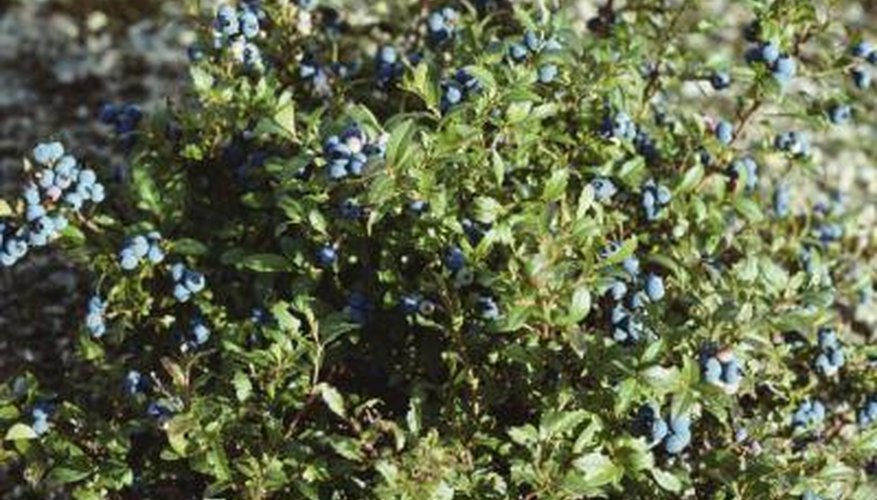Plump, sweet, juicy blueberries can be picked along the roadside or in your own backyard. Not only are the plants attractive garden additions, with their colourful foliage, but their lack of thorns make them a friendlier berry bush than thornier types like blackberries. Highbush, or cultivated blueberries are cousins to the wild blueberries that still grow through much of North America, and both are blessed with smooth branches free of thorns.
History
The lowbush variety of blueberry, often referred to as wild blueberry, is a crop native to North America. It grows North to Quebec in Canada and all the way down to Virginia. After glaciers in the area left poor soil in those regions, the wild blueberry evolved. Nowadays, they often appear naturally in abandoned fields, mountains, along roads and in succession forests. Wild blueberry is also found in the forest understory and may live for decades under poor light conditions. American Indians often consumed the tiny, antioxidant-rich berries for medicinal and nutritional purposes.
- The lowbush variety of blueberry, often referred to as wild blueberry, is a crop native to North America.
Growth Habits
Wild blueberries produce tiny fruit and only reach about a foot tall, which gives them their "lowbush" name. Adapted to acidic soil conditions, the berries survive well in poor soil and require little maintenance. They spread by seed and rhizomes, often growing in an irregular mat formation and creating a patchwork of certain genetic types, which some growers refer to as a cloning fashion. Clones vary in their attributes, so cultivators benefit by observing and selecting for ideal traits.
- Wild blueberries produce tiny fruit and only reach about a foot tall, which gives them their "lowbush" name.
- Clones vary in their attributes, so cultivators benefit by observing and selecting for ideal traits.
Wild Blueberries at Home
To grow wild blueberries in your garden, prepare soil by lowering the pH to 4.5 to 4.8. Obtain plugs or buy plants from a nursery and plant in soil, surrounded by plenty of mulch. Wild blueberry grows slowly and uses a rhizome system to spread. Fertilise with acid-loving fertilisers and provide plenty of nitrogen. Varieties vary, such as the low sweet blueberries, which has smooth leaves and stems and berries ranging from light blue to black. The sour top variety has fine, white hairs on its stems and leaves.
- To grow wild blueberries in your garden, prepare soil by lowering the pH to 4.5 to 4.8.
- Wild blueberry grows slowly and uses a rhizome system to spread.
Highbush Blueberries
Though wild blueberries were long consumed by American Indians, their domesticated cousins offer larger berries and more productive plants. Highbush blueberries grow 10 times as tall thanks to genetic selection achieved early in the 20th century. Exceptional wild bush samples were selected to propagate the domestic cultivated variety. Whether cultivated or picked from wild bushes, blueberries can be used for jams, pies, salads and numerous other dishes.
- Though wild blueberries were long consumed by American Indians, their domesticated cousins offer larger berries and more productive plants.
